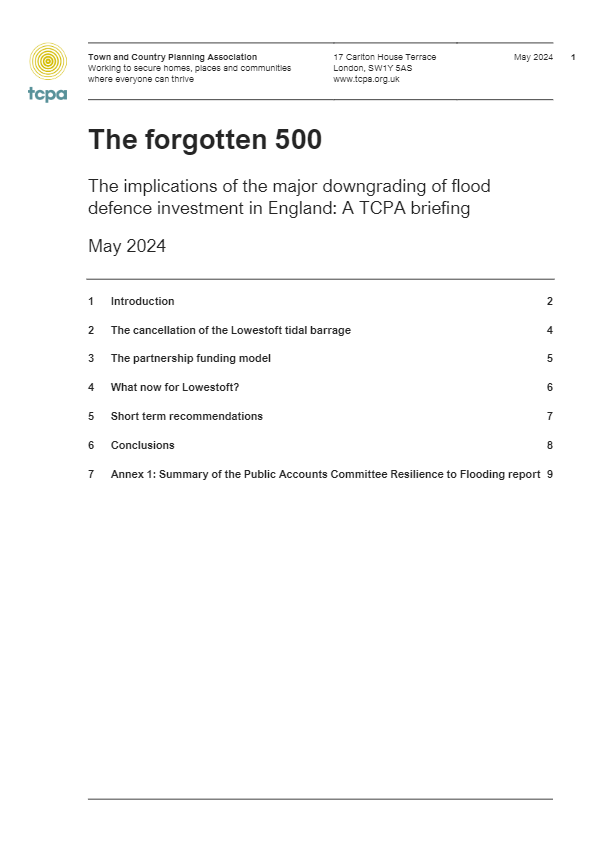Flooding is having a devastating effect on communities across England. However, there has been a major downgrading of flood defence works which is putting hundreds of communities at risk.
Reduced investment
A recent Public Accounts Committee (PAC) report (January 2024) revealed that of the 2,000 flood defence schemes designed to protect communities at critical risk of flooding, 500 will no longer receive the necessary investment in the current funding programme (which runs from 2021-2027).
Not only does this mean a dramatic decline in the overall number of homes that will be protected by the current funding programme (200,000 instead of the original 336,000), but there will also be wider impacts for communities whose long-term development prospects are predicated on major flood defence investment.
Case study: Lowestoft
For instance, in the case of Lowestoft in Suffolk, while majority of homes are not directly affected by the cancellation of the tidal barrage, the town’s commercial and service heart will now be highly vulnerable to flooding. This affects the viability of the entire community.
Coastal communities are particularly vulnerable to a combination of rapidly rising sea levels and the increasing risk of storm surges driven by severe weather events. The government’s own 2023 National Risk Register identifies the potential for major loss of life on the east coast under a reasonable worst-case scenario for major flooding. The stark reality is that these risks play out in places such as Lowestoft where the centrepiece of the town’s flood defence infrastructure, which was to have been a river barrage capable of providing long-term protection against tidal surges, has now been cancelled for the foreseeable future.
The most immediate impact of these funding shortfalls will be economic and social, because the failure to invest in long-term flood resilience will lead to growing challenges in gaining affordable commercial insurance and dramatically decrease mortgage availability. This has the potential to create a self-reinforcing cycle of economic and social decline, which in turn makes finding local contributions to partnership funding even harder to secure.
The forgotten 500
The TCPA’s latest briefing sets out the background to the major downgrading of flood defence investment in England. It then uses Lowestoft as case study to explore the dramatic implications for those communities where strategic flood defence investment has been withdrawn.




